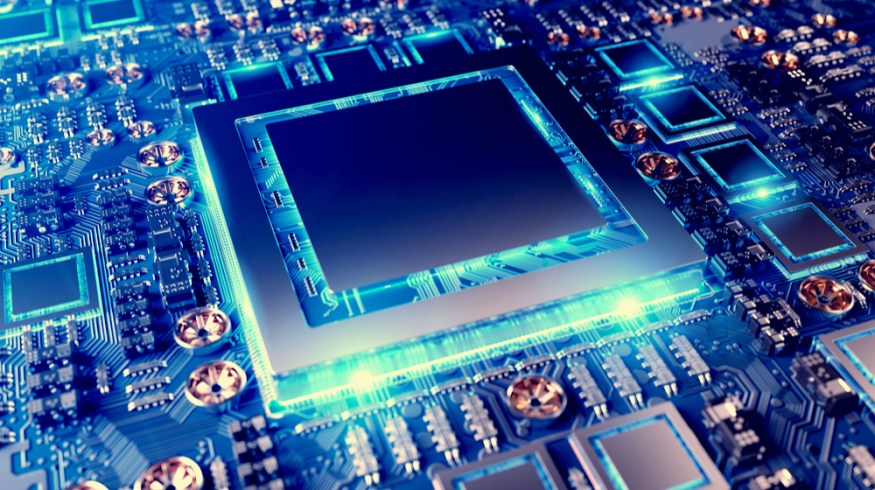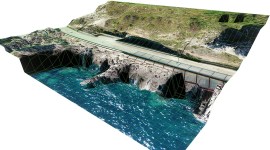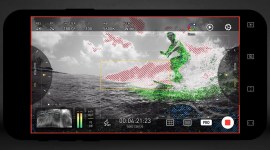
Nvidia Announces 3000-Series GPUs Coming to Market Soon
Nvidia’s new line of Ampere GPUs are here, doubling down on AI-assisted features for gamers and content creators. Here’s the scoop.
After weeks of teasing and looking back at past product launches, Nvidia finally announced their 3000-series of GPUs via a live stream on Sept. 1.
Nvidia announced three new GPUs during their live-streamed event, with the flagship $699 RTX 3080 leading the way. The more affordable RTX 3070 offers a slightly better performance than Nvidia’s current best GPU — the RTX 2080 Ti — at an incredibly low price of $499. Finally, the RTX 3090 is a behemoth, dubbed the “BFGPU” (get it?), by Nvidia, costing a staggering $1499. The RTX 3090 is capable of 8K gaming at 60fps, a previously unheard of and absolutely ludicrous resolution and frame rate combination.
Nvidia’s new GPU lineup uses the second-generation RTX Ampere architecture, which promises faster clock speeds, better cooling, advanced AI-assisted features, and more efficient ray-tracing. The live-streamed event, presented by CEO Jen-Hsun “Jensen” Huang from his kitchen, focused mainly on the gaming aspect of the new GPUs, with Jen-Hsun giving a nod to gamers’ role in the development of GPUs. Jen-Hsun said:
It is the gamers and their insatiable demand that is the driving force of the GPU.
All three Founders Edition versions of the GPUs use a new dual-axial flow-through cooling system that’s said to keep the GPU cooler while remaining quieter than previous models. Ampere GPUs use second-generation ray-tracing cores and third-generation AI Tensor cores. The GPUs also use GDDR6 VRAM and the new RTX IO feature, which Nvidia claims can load game assets directly from storage to VRAM and lower CPU use by up to twenty times when accessing storage. Specifications for each of the GPUs vary, but here’s the full spec sheet.
Why This Is Good News for Creatives
While the Ampere GPUs are certainly great for gaming, thanks to ray-tracing — ray-tracing renders light in a realistic, life-like way — they’re also great for creatives working in video editing, visual effects, animation, architecture, and other fields that require computer graphics. Video editors using the paid version of DaVinci Resolve or Premiere Pro can take advantage of a powerful GPU to render video and assist with other in-software tasks via hardware acceleration.
Though Nvidia’s line of professional-grade Quadro GPUs are best for creative projects, this new line of consumer-grade Ampere GPUs offer incredible performance at a competitive price. The Beat recently published an article on building video editing PCs, and we recommended Nvidia’s current flagship, the RTX 2080 Ti, in our high-end video editing PC build. The RTX 2080 Ti is approved by Adobe for use in Premiere Pro and After Effects, making it a reliable option for GPU-accelerated rendering. The problem is that it’s too expensive, costing over $1000, but the new lower-priced $499 RTX 3070 offers better performance, at less than half the price. When the RTX 3070 goes on sale in September, it’ll be possible to build a great video editing PC for much less.
The video above was not pre-rendered. It’s from a demo that is using real-time ray-tracing to simulate lighting. A previous demo showed off this same gameplay running on current hardware, and the differences are appalling. It’s only a matter of time before creators use the full potential of these GPUs to create amazing games, animated movies, and more.
According to Nvidia, their RTX 3000-series of GPUs are capable of 3D rendering times that are up to two times faster than the current Nvidia GPUs. For visual effects artists and animators that use 3D rendering software — such as Blender Cycles and Maxon Cinema 4D — Nvidia promises to reduce wait times. SheenCity Mars and D5 Render — 3D rendering software used for architecture — use Nvidia’s new DLSS 2.0 feature. Deep Learning Super Sampling is a deep-learning neural network that RTX GPUs can use via their Tensor Cores — AI processors — to render sharp images and high frame rates.
Other Features Announced
Though many of the features announced at the event were directed at gamers, several features stood out for content creators. Nvidia Broadcast gives streamers, and those working from home, the tools to enhance their cameras and microphones on various streaming and videoconferencing software. And Omniverse Machinima lets creators use game assets to create their own stories.
Nvidia Broadcast
Streamers can now get more out of their setup by using Nvidia’s Broadcast software, which uses AI to enhance video and audio. The Nvidia Broadcast App is a plugin that integrates with streaming software, such as OBS, Twitch Studio, and even video conferencing apps like Zoom.
When streaming or videoconferencing, a quiet environment is necessary, but not always possible. Nvidia Broadcast introduces Noise Removal, a feature that uses AI to remove background noise. In the video above, you can hear as the sound of the blow dryer immediately goes quiet as Noise Removal is turned on. With Noise Removal turned on, crying babies, barking dogs, and other background noise will no longer interrupt stream or video calls.
Virtual Background is another useful feature. Zoom uses similar technology to remove and replace what’s behind a person, but Nvidia Broadcast’s Virtual Background uses AI to change the background. This feature not only removes or replaces the background, it can also blur the background, a look that’s only obtainable by using expensive cameras with large-aperture lenses. It’s almost impossible to tell the difference between using Virtual Background and using a green screen to get the same effect.
Finally, Auto Frame tracks a user’s head as it moves around the screen, creating the illusion that the camera is moving. The software zooms in on the subject, making it possible to track head movements from side to side. Users who turn this on will stay in-frame, even when reaching for a drink or moving away from the computer.
Nvidia Broadcast will become available to download later in September, for users with Nvidia RTX GPUs.
Omniverse Machinima
Omniverse Machinima is a new Nvidia-developed tool that lets users create videos using assets from video games. Users can import characters, backgrounds, and other assets from video games and animate them to create stunning videos. This type of filmmaking is known as Machinima. And, while it has been around for years, the tools within Omniverse Machinima will make it easier for others to pick up the skill.
The software uses real-time ray-tracing, physics, and character animation for like-like simulation. Users can import a voice track and fully animate a character’s mouth by using the software’s face animation AI. By capturing a user’s movement via webcam, the AI can animate a character’s movement. Omniverse Machinima integrates with software such as Maya, Unreal Engine, Photoshop, and others. The software isn’t available yet, but prospective users can apply for early access.
Ampere Shatters Expectations
A third-party GPU manufacturer may have accidentally leaked Nvidia’s new Ampere GPUs’ specifications ahead of schedule, but the final reveal seems to have been worth it. Both the RTX 3070 and 3080 are affordable, relative to last-generation RTX GPUs, and they’re clearly more powerful than even the most powerful consumer-grade GPU currently on sale.
The spec sheet for Ampere GPUs is impressive, but the bevy of other features, such as Nvidia Broadcast and Omniverse Machinima, show that Nvidia puts creators at the forefront. While gamers will certainly get a lot out of these impressive GPUs, creators will find ways to push boundaries on animation, video production, and 3D rendering.
Until reviewers get their hands on Ampere GPUs, we won’t know their real-world performance, but Nvidia seems confident about their products. Referring to a future when holodecks and light speed spaceships are made a reality, Jen-Hsun said:
In this future, we will look back and realize that it started here.
Nvidia and third-party manufacturing partners are set to release the RTX 3080 and 3090 GPUs in the coming weeks. The affordable, yet incredibly powerful, RTX 3070 will hit shelves some time in October.
Cover image via sdecoret.




